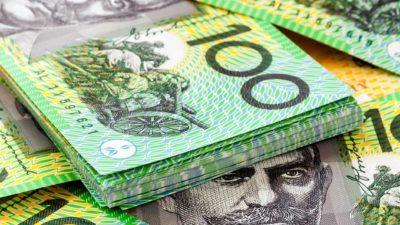It is possible to create a yearly income of $60,000 of dividends from ASX shares, if compound interest can be utilised.
How compounding can help
Albert Einstein once supposedly said about compound interest: "Compound interest is the eighth wonder of the world. He who understands it, earns it, he who doesn't, pays it."
Compounding in financial terms means when your money earns interest and then that interest earns interest. It builds like a snowball.
With a 5% interest rate, a single $100 investment will only make $5 over one year. But if that $100 is given 10 years to grow at a 5% interest rate, and the money is re-invested each year, then it grows to $163. It takes less than 15 years for the $100 to double to be $200.
Over the long-term, the ASX share market has returned around 10% per annum over the decades.
According to Vanguard, Australian shares have produced returns of 9.6% per annum since 1970.
There are various compound interest calculators. Moneysmart has one.
If an investor put $10,000 into the ASX share market and it returned 10% per annum over the next two decades then it would turn into just over $73,000 over the next two decades. That's assuming that no other investments are made.
Most employees make at least quarterly investments into their superannuation funds through their employer. Some people also decide to invest regularly into shares outside of superannuation.
If that same investor put in the $10,000 at the start and then invested $200 every month for the next 20 years, with the ASX share market making returns of 10% per annum, then it turns into $225,000 over 20 years.
There are many different scenarios that you can play around with using the calculator.
If the investor put in $1,000 a month instead of $200 a month then they'd have $832,650 after that 20 year period.
Where does the $60,000 of yearly dividends come in?
Given enough time and contributions, it is possible that the portfolio value would be well in excess of $1 million. That portfolio could generate dividends each year.
For example, if a 25-year old decided to invest $1,000 a month into the ASX share market over the next 25 years until they were 50 and the share market returned 10% per annum then it would turn into a portfolio worth $1.45 million.
If the portfolio were invested in ASX shares that had an overall dividend yield of 4.5% then it would generate $65,250 of dividends each year (which is actually more than $60,000).
Many ASX shares have a unique advantage in relation to dividends because of the Australian taxation system which generates franking credits for companies that pay corporate tax.
As the Australian Taxation Office (ATO) states: "Dividends paid to shareholders by Australian resident companies are taxed under a system known as imputation. This is where the tax the company pays is imputed, or attributed, to the shareholders. The tax paid by the company is allocated to shareholders as franking credits attached to the dividends they receive.
If you are an Australian resident, it will "reduce your tax liability from all forms of income (not just dividends) and from your taxable net capital gain" and/or "refund any excess franking to you after any income tax and Medicare levy liabilities have been met."
The franking credits have the effect of boosting the after-tax dividend yield from ASX shares.
The 4.5% yield is just one example yield. If the dividend yield of the portfolio is lower, then it requires a higher portfolio value to generate the same amount of dividends. If the dividend yield of the portfolio is higher then the required portfolio value to generate the same amount of dividends is lower. Getting back to the $60,000 dividend target, a simple example would be a $1 million portfolio with a 6% dividend yield would make $60,000 of annual dividends.
Now the tricky part is finding which ASX shares to invest in.





